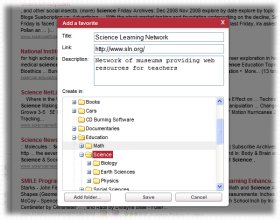|
Education
Web
Viewing 1-2 of 2 total results
59 RAFT This chart shows examples of role, audience, format and topic combinations which may be used for reflective writing exercises in various curricula areas. Role Audience Format Topic bald eagle public radio public service announcement symbols on the American currency Barbara B...
1
0
59 RAFT This chart shows examples of role, audience, format and topic combinations which may be used for reflective writing exercises in various curricula areas. Role Audience Format Topic bald eagle public radio public service announcement symbols on the American currency Barbara Bush mothers advice column duties/responsibilities of president calculator math students letter to the editor use of calculator in the classroom heart medical community journal article value of exercise
47
0
http://www.state.tn.us/education/ci/english/doc/READ_Gr_6-8_Content_Area.pdf#page=47
www.state.tn.us/education/ci/english/doc/READ_Gr_6-8_Content_Area.pdf#pag...
47 ACADEMIC JOURNALING Response Journals Description: Response Journals create a permanent record <span class="highlight">of</span> what readers are feeling <span class="highlight">and</span> thinking as they interact with literary or informational texts. It allows students to record their thoughts <span class="highlight">and</span> emotional reactions about texts. Reading selections may be used as a springboard to inspire students’ feelings <span class="highlight">and</span> thoughts about a topic. Most <span class="highlight">journal</span> activities require thinking but do not demand a finished product. Students learn to write without fear
49
0
http://www.state.tn.us/education/ci/english/doc/READ_Gr_6-8_Content_Area.pdf#page=49
www.state.tn.us/education/ci/english/doc/READ_Gr_6-8_Content_Area.pdf#pag...
49 ACADEMIC JOURNALING CONNECTED TO CONTENT AREA Double-Entry Journals Description: A Double-Entry <span class="highlight">Journal</span> is a versatile adaptation <span class="highlight">of</span> the response <span class="highlight">journal</span>. Using a Two Column/T-note format, the double-entry <span class="highlight">journal</span> allows students to record dual entries that are conceptually related. Students are juxtaposing their thoughts, ideas, <span class="highlight">and</span> feelings according to the prompts provided for making entries. Step-by-Step 1. Use double-entry journals the same as the response journals except for heading
59
0
http://www.state.tn.us/education/ci/english/doc/READ_Gr_6-8_Content_Area.pdf#page=59
www.state.tn.us/education/ci/english/doc/READ_Gr_6-8_Content_Area.pdf#pag...
59 RAFT This chart shows examples <span class="highlight">of</span> role, audience, format <span class="highlight">and</span> topic combinations which may be used for reflective writing exercises in various curricula areas. Role Audience Format Topic bald eagle public radio public service announcement symbols on the American currency Barbara Bush mothers advice column duties/responsibilities <span class="highlight">of</span> president calculator math students letter to the editor use <span class="highlight">of</span> calculator in the classroom heart <span class="highlight">medical</span> community <span class="highlight">journal</span> article value <span class="highlight">of</span> exercise
50 of 75 ACADEMIC JOURNALING CONNECTED TO CONTENT AREA Double-Entry Journals Description: A Double-Entry Journal is a versatile adaptation of the response journal. Using a Two Column/T-note format, the double-entry journal allows students to record dual entries t...
1
0
50 of 75 ACADEMIC JOURNALING CONNECTED TO CONTENT AREA Double-Entry Journals Description: A Double-Entry Journal is a versatile adaptation of the response journal. Using a Two Column/T-note format, the double-entry journal allows students to record dual entries that are conceptually related. Students are juxtaposing their thoughts, ideas, and feelings according to the prompts provided for making entries. Step-by-Step 1. Use double-entry journals the same as the response journals except for heading each
51
0
http://www.state.tn.us/education/ci/english/doc/ENG_3081.pdf#page=51
www.state.tn.us/education/ci/english/doc/ENG_3081.pdf#page=51
48 <span class="highlight">of</span> 75 ACADEMIC JOURNALING CONNECTED TO CONTENT AREA Response Journals Description: Response Journals create a permanent record <span class="highlight">of</span> what readers are feeling <span class="highlight">and</span> thinking as they interact with literary or informational texts. It allows students to record their thoughts <span class="highlight">and</span> emotional reactions about texts. Reading selections may be used as a springboard to inspire students’ feelings <span class="highlight">and</span> thoughts about a topic. Most <span class="highlight">journal</span> activities require thinking but do not demand a finished product. Students learn
53
0
http://www.state.tn.us/education/ci/english/doc/ENG_3081.pdf#page=53
www.state.tn.us/education/ci/english/doc/ENG_3081.pdf#page=53
50 <span class="highlight">of</span> 75 ACADEMIC JOURNALING CONNECTED TO CONTENT AREA Double-Entry Journals Description: A Double-Entry <span class="highlight">Journal</span> is a versatile adaptation <span class="highlight">of</span> the response <span class="highlight">journal</span>. Using a Two Column/T-note format, the double-entry <span class="highlight">journal</span> allows students to record dual entries that are conceptually related. Students are juxtaposing their thoughts, ideas, <span class="highlight">and</span> feelings according to the prompts provided for making entries. Step-by-Step 1. Use double-entry journals the same as the response journals except for heading each
|
